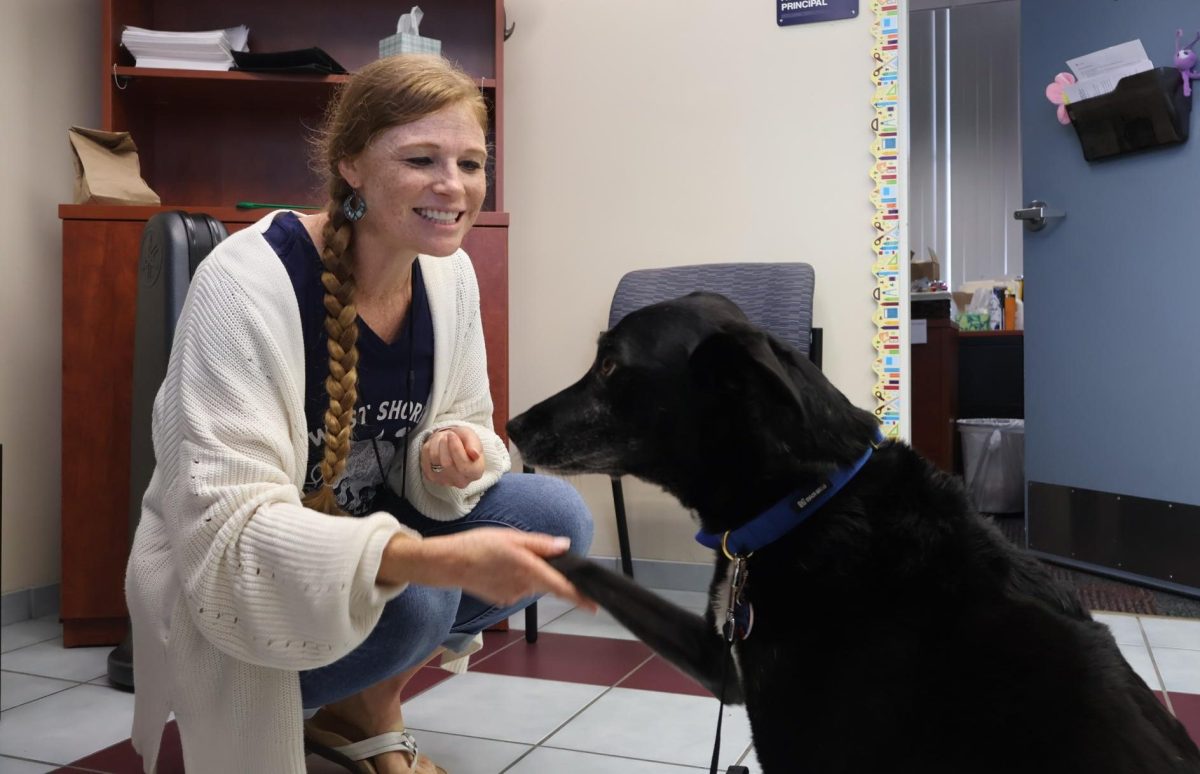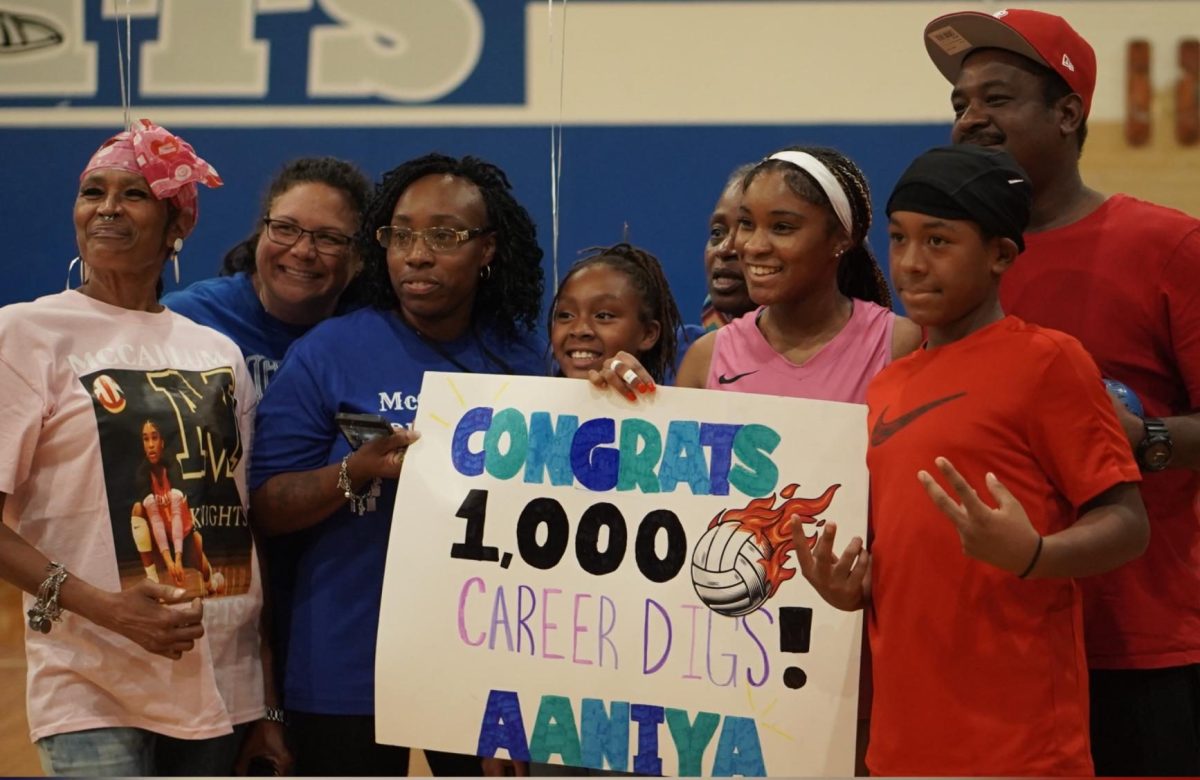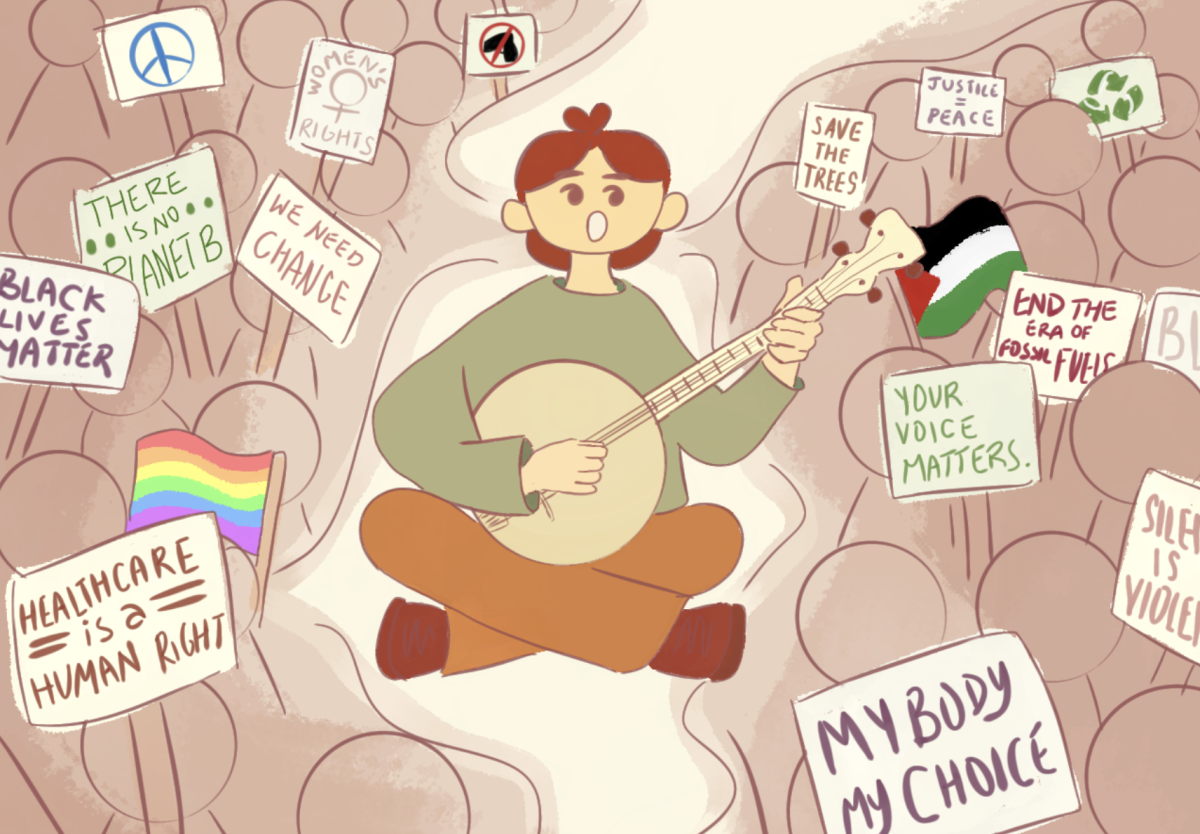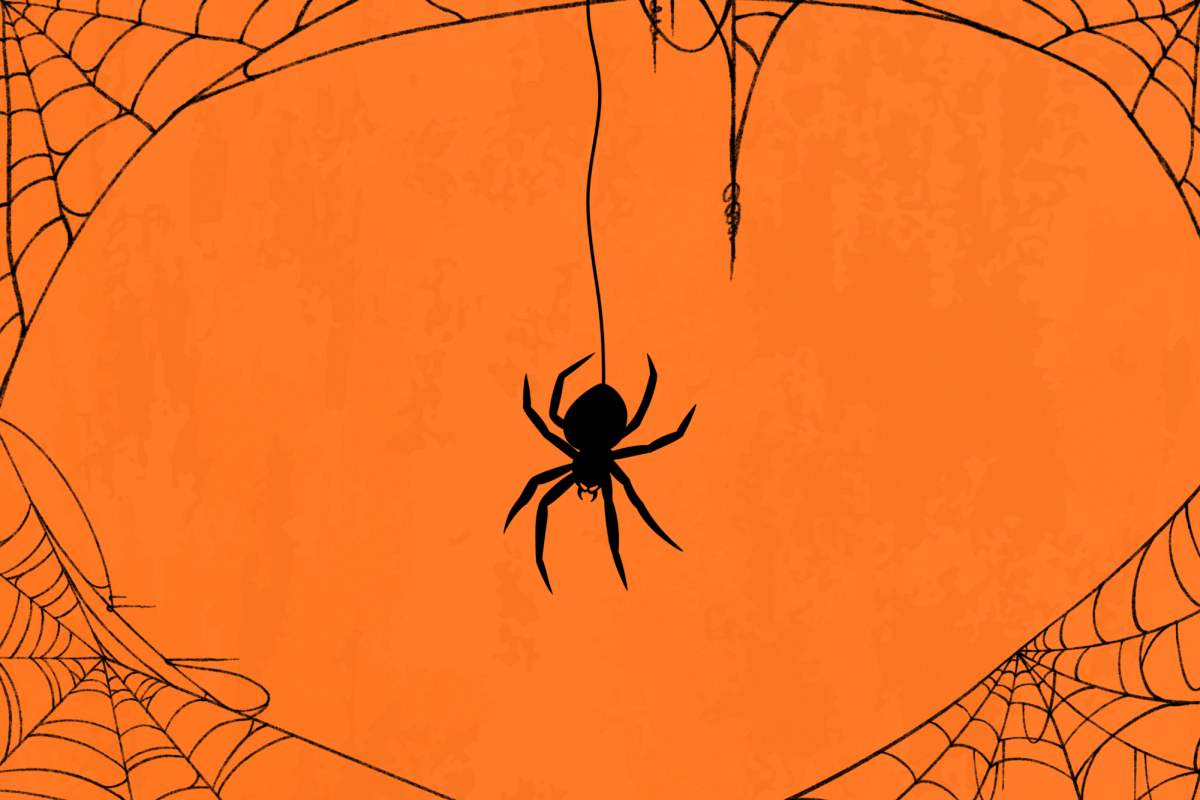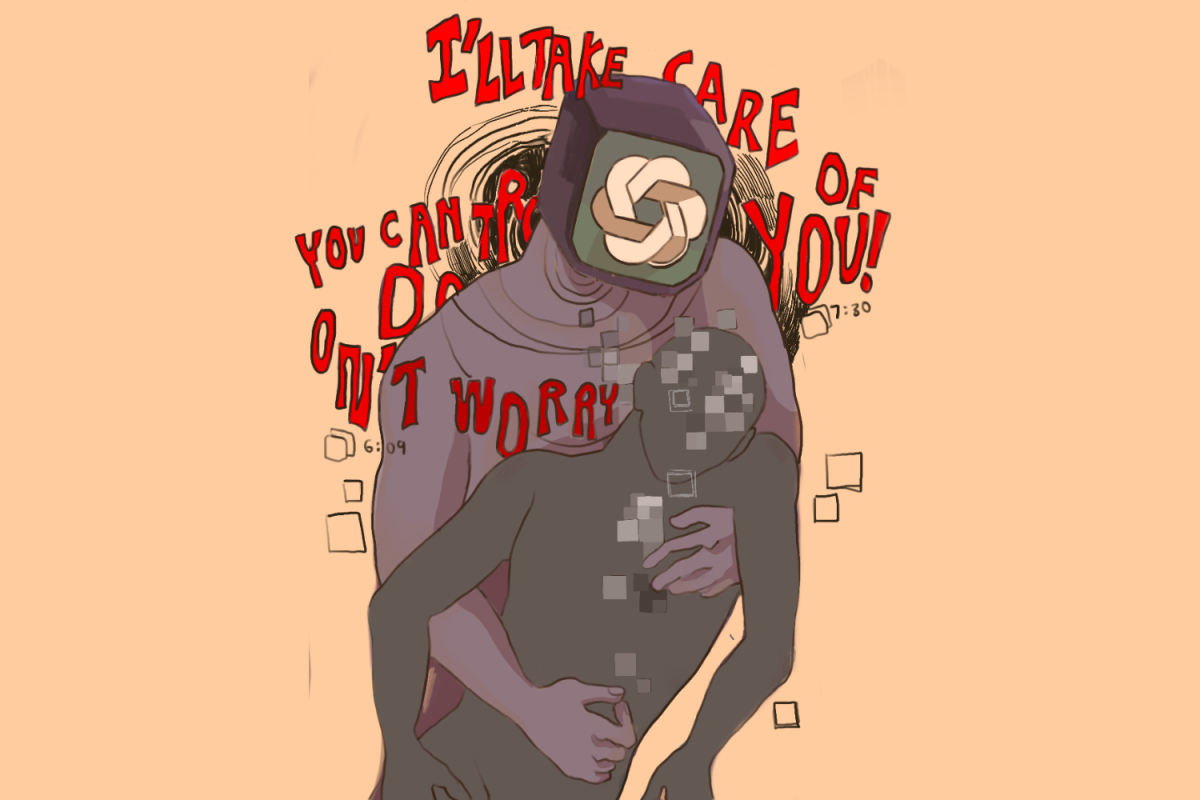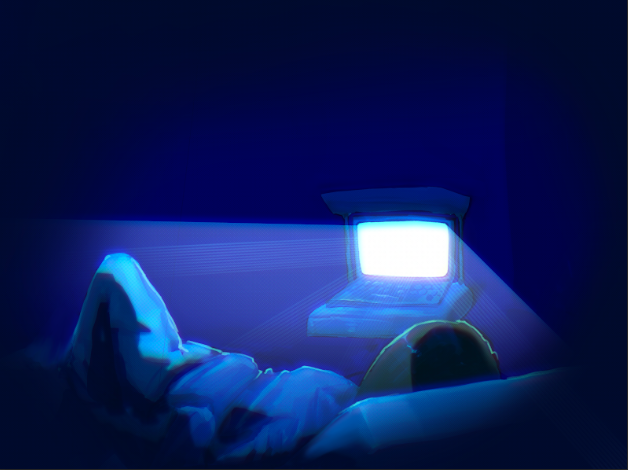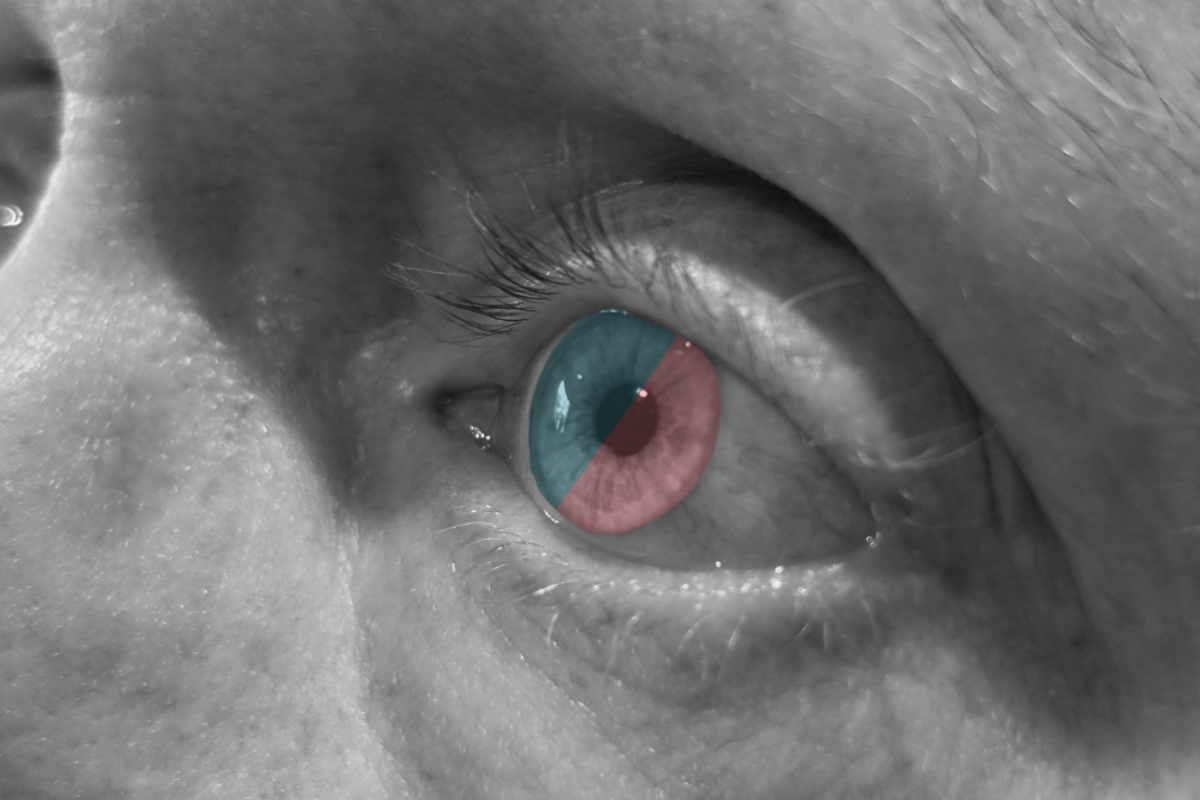Red, orange, yellow, green, blue, indigo, and violet: the rainbow. But what if that wasn’t it?
Sophomore Ryan Evert experiences a different kind of rainbow. Where others see a sharp distinction between blue and green or yellow and violet, his eyes confuse the pairs in shades known only to him.
The cause? A singular cone.
This cone, located in the center of the eye’s retina, is one of three that each detect different wavelengths of light and are primarily sensitive to a color: red, green, or blue, better known as the L, M, and S cones, respectively.
“The blue-sensitive cone is more sensitive to blue than it is to other wavelengths — other colors — but if the other colors are bright enough, the blue-sensitive cone will see it. Same for the red and green. The red-sensitive cone isn’t just seeing red. It’s just more sensitive to red,” said Michael Marmor, M.D., a professor of Ophthalmology and Human Biology at Stanford University School of Medicine.
When one or more of these color cones are broken, missing, or misinterpreting light, color vision deficiency (CVD) occurs, affecting the specific colors associated with the impaired cone.
CVD is a genetic mutation that impairs the ability to perceive or distinguish colors correctly. For someone with CVD, a rainbow may only have two to three colors.
Evert’s story
Evert was only six years old when he first realized something was different.
“We went to the Exploratorium in San Francisco. They had this color matching exhibit, and I couldn’t do it,” Evert said. “They told me I was color blind.”
Evert has blue-yellow color deficiency, which, despite the name, doesn’t actually involve confusing blues and yellows. Instead, it affects his ability to differentiate between blues and greens, and occasionally yellow and violet.
“Of course, I wonder what other people think of a color,” Evert said. “I wear a lot of blue, but it’s not that it’s harder to see — it’s more that it’s harder to define as blue. It’s a lot lighter, and it’s a different shade — not like gray, but a different type of hue.”
Evert is not alone in this experience. According to EnChroma, over 350 million people in the world are color deficient — a group larger than the entire population of the United States.
“Color blindness is the most common single-gene disorder in people. About 1 of every 12 men in the United States have some form of red-green color blindness, and about 1 out of every 200 women do,” said Jay Neitz, Ph.D., a professor of Ophthalmology at the University of Washington.
Even well-known figures like Mark Zuckerberg, CEO of Meta, share this condition. Zuckerberg, who is red-green color deficient, has said that blue is the color he sees most clearly — one of the reasons why Facebook’s primary color is blue.
A false name: ‘color blindness’
Almost universally, color vision deficiency is referred to as “color blindness.”
But the term “blindness” often leads to a common misconception: that those with CVD can’t see color at all. In reality, most people who are considered “color blind” aren’t blind to color; rather, they perceive a much narrower range of it.
“For me, I like to think of the type of color blindness I have as color confusion,” said Derek Torsani, a deuteranope. “It rarely ever means that I can’t see a color and it’s just gray, but sometimes I might think that a blue is a purple, or a gray is a pink, or an orange is a red.”
Color cones overlap in their sensitivity curves, which together make the full spectrum of color visible. In people with CVD, one of these cones may be missing or shifted in sensitivity, disrupting the normal overlap and significantly limiting their range of color vision.
“The genetics have created different defects. Some of them bring the two curves very close together, and you can barely distinguish certain colors, and some of them are pretty far apart, but not quite normal,” Marmor said.
Unfortunately, the full scope of this variation in color vision remains largely misunderstood.
“Most people out there in the world assume that it’s an all-or-none condition, which it’s not, because of the multiple kinds of mutations that can take place in the genes. They assume that, if 8% have it, then those 8% can’t tell red from green, but that’s not always true,” Marmor said.
The types
There are several types of inherited color deficiency, ranging from mild difficulty to complete inability to distinguish color.
People with normal color vision, where all three cones function properly, are known as trichromats.
On the opposite end of the spectrum are those with monochromatic vision, or achromatopsia, a condition in which all three cones are non-functional. As a result, they see the world in varying shades of grey — true color blindness.
Yet achromatopsia is extremely rare, affecting only 1 in 33,000 people.
The most common CVD condition involves “damaged” trichromatic vision, where one type of cone doesn’t function properly. This can mean the cone is either completely missing or is just less responsive to a certain light. In the first case, only two cones exist, so the condition is called dichromacy, while the latter involves only a deviation from standard color vision and is thus anomalous trichromacy.
“There’s three different types. You could be missing your blue cones or your green cones or your red cones, but the one way more common is where there’s something wrong with your red cones or your green cones. Issues with blue cones are very rare,” Neitz said.
Evert has this most rare of the three types: tritanopia, or the anomalous tritanomaly, a condition with reduced sensitivity to blue light known as blue-yellow color deficiency. For most with this type, the world appears mostly in shades of red, pink, black, white, grey, and turquoise.
“Sometimes, I do ask for clarification, but I don’t usually struggle too much,” Evert said. “Coloring is definitely a little bit more difficult, especially trying to identify, for example, ‘what is blue?’ It kind of gets bunched up in other colors.”
Much more common is a missing primarily green light-sensitive cone, known as deuteranopia, or red-green color deficiency, finding difficulty in differentiating reds, greens, browns, and oranges. The anomalous version is deuteranomaly.
Also under the category of red-green color deficiency is protanopia, or the anomalous protanomaly, but it is instead caused by a missing or damaged red light-sensitive cone.
However, due to the many mutations and ways the color cones’ curves can shift on the spectrum, no color deficiency, even of the same type, is the same.
“It’s very easy to lump color blindness into categories like Deuteronopia, or Protanopia, or red-green, or this and that, but it’s such a spectrum that it means something different for everybody,” Torsani said. “The way I see colors with my specific color blindness is going to be different than how someone else sees colors with the same type of color blindness.”
Living with color vision deficiency
Color vision deficiency often goes unnoticed in early childhood — not because it isn’t present, but because the world doesn’t immediately expect kids to name or compare colors with absolute precision.
It’s instead in the small, subtle moments — confusing crayon colors, mismatching socks, or coloring a tree purple — that the signs begin to emerge.
“How early people realize they’re color deficient typically depends on how severe it is and what they’re trying to do,” Marmor said. “It’s going to be when they mix up colored clothing, or when somebody asks them to draw a picture, and they put in different colors than most would and didn’t notice or didn’t realize it.”
The most common form, red-green CVD, is linked to a mutation on the X chromosome. As a result, men, who have only one X chromosome, will express the condition if the recessive gene is inherited, making it much more common for them. Women, on the other hand, can carry the gene without showing symptoms if their other X chromosome is normal.
Evert’s condition of blue-yellow color deficiency is different. This more rare form of CVD is caused by mutations on a non-sex chromosome which both genders possess equal amounts of and as a result have an equal probability of showing.
While not life-threatening, color vision deficiency still plays a large, although quiet, role in shaping the experiences of those who live with it, often in ways most people never have to consider.
In some professions, such as firefighting, law enforcement, and airline pilots, perfect or near-perfect color vision is required for safety and precision. Color plays a key role as the differentiator of equipment, the identification of suspects, and part of the dashboard, which those with CVD may find challenging to interpret.
“They lack some of the machinery to make distinctions with paler or darker colors relative to their friends,” Marmor said.
In bright environments with vivid contrasts, like on a sunny day or in the pages of a freshly printed children’s book, those with partial color blindness are often able to recognize and name colors with some confidence. However, in dimmer or more nuanced environments, the lines can start to blur.
Technology adds another layer of complexity.
“Usually, the place where it affects me the most is seeing a color digitally,” Torsani said. “A lot of times that’s because of the color temperature of your screen or the lighting that you’re viewing it in.”
Still, most people with color deficiency adapt well. Whether it’s memorizing color sequences like those of stop lights, using assistive technology, or simply asking for clarification when needed, those with CVD find their own ways to navigate a color-coded world.
“There’s lots of people that are colorblind, and they live perfectly normal lives, and they’re happy,” Neitz said. “There are things that people can use to compensate for the fact that they have color blindness. Human beings have an amazing ability to overcome disabilities. There are people that are blind and have very normal lives, so it’s not the end of the world.”
Working with color without all the color
As a lead visual designer at the Wikimedia Foundation, Torsani has a story different from most. He didn’t discover he was color deficient until well out of college — when he was already established in his career.
“Before college, I was spending a lot of time on the computer and realized that I needed glasses. At that time, I didn’t learn anything about my color blindness,” Torsani said.
He went on to attend art school, where he studied graphic design and color theory, still completely unaware of his condition. After graduating, he began his professional journey in design, filmmaking, and animation, regularly working with reds and greens without any indication that something might be off.
It wasn’t until years later, when he decided to try contact lenses, that the truth came out. As part of the process, he was asked to take an Ishihara test — a color vision exam where patients are shown colored numbers inside colored circles to detect red-green color deficiency.
“They asked me, ‘What number do you see here in this chart?’ I didn’t see a number. ‘What about this one?’ I didn’t see a number,” Torsani said. “They told me I was red-green color blind. The doctor just threw it out there like it was no big deal.”
But for Torsani, it was.
“To me, I was thinking that I’m a designer. I went to art school. I can’t be color blind. How will my employers trust me? How will my peers trust me?” Torsani said. “I thought like that for a long time, until I realized that a lot of people experience the world in many different ways. I decided that it wasn’t something that I should hide, but something that I should be proud of and really embrace to help make me a better designer. I’m not afraid to tell everyone, and I think it’s actually something that has benefited my career.”
A solution or a risk
For decades, color blindness has been seen as a permanent condition — an inherited trait with no real cure, only coping strategies.
However, that narrative may be shifting, thanks to pioneering work in gene therapy by Neitz and his wife and research partner, Maureen Neitz, Ph.D., a molecular geneticist.
Neitz’s journey began with a curiosity about the neural mechanisms behind color vision, and, eventually, the causes of color vision deficiency.
“We discovered that a very common cause of the most severe forms of color blindness, where people are missing their red cones or their green cones, is that people have actually lost one of their genes, so they don’t even have the red photopigment gene, or they don’t have the green photopigment gene,” Neitz said.
Armed with this insight, Neitz felt driven to find a cure.
“If you’re a scientist and you discover what causes something, you should be able to figure out how to cure it,” Neitz said. “We thought that, if we could just replace the missing gene, then maybe we could cure colorblindness.”
His idea was gene therapy — a method involving the modification of genes to treat or cure disease. While the concept had already been explored by others, Neitz adapted it specifically to address color deficiency.
“Naturally, the thing that viruses do is attach themselves to a cell, and then inject their DNA inside. People already had the idea that you could genetically engineer a virus so that, rather than injecting its own DNA into a cell, you could get it to inject a therapeutic gene into a cell,” Neitz said. “We just developed a version that worked in this particular case with the human red cone photopigment gene.”
To test the concept, Neitz turned to squirrel monkeys, a species native to the tropical rainforests of South America. Their strong genetic similarity to humans — specifically, that they exhibit a form of color deficiency almost identical to that in humans — made them the ideal model.
“In the population, there are monkeys that have normal color vision, but there are also monkeys that are missing either the red cone photopigment gene or the green cone photopigment gene,” Neitz said. “We were able to get monkeys that were missing the red photopigment gene that we could try gene therapy on.”
Neitz then administered the Adeno-associated virus (AAV), a virus commonly used to transport therapeutic genes in gene therapy. Once injected, the gene did exactly what it was designed to do.
“These monkeys have blue cones, and they have green cones, but no red cones, so we wanted to do it in such a way that they would only attack a random number of the green cones and inject the red photopigment gene, making green cones into red cones,” Neitz said. “They don’t perfectly make them into red cones. They still express some of the green photopigment, but still a subset of the cones express the red photopigment, and so it makes the monkeys’ retinas very much like a normal retina, where there’s three different kinds of cones.”
Still, one of the primary concerns during this process was ensuring that the modified virus didn’t cause unintended side effects by affecting the wrong cells.
“Once you inject it in the eye, these viruses actually attack every kind of cell that’s in the eye, including the blue cones and the rod photoreceptors and all sorts of other things that are in the eye,” Neitz said.
However, according to Neitz, “special genetic switches” keep the virus from touching other parts of the eye by controlling when and where a gene is activated.
“Even though every single cell in your body has every single gene, certain genes are only expressed in very specific places, like you don’t have skin genes expressed inside your body,” Neitz said.
The same principle applies here. The therapeutic gene would only activate inside green cone cells, meaning that, even though the virus entered many different types of cells, it only did its job in the ones it was meant to help.
“The other kinds of cells know that it’s a virus, and they eventually get rid of it, so there’s no long-term effects,” Neitz said.
This method is currently only possible for forms of red-green color deficiency, due to differences in how the mutations for different deficiencies affect the cones.
“In the worst forms of red-green color blindness, if you’re missing a red gene, all of the cones that would have been red turn on the green gene,” Neitz said. “So, a red-green colorblind person has the same number of cones as a normal person does, which is nice because now we can just turn a fraction of the green cones into red ones.”
The situation is quite different when it comes to blue-yellow color blindness.
“Most causes of blue-yellow color blindness that affect the blue cones are caused by mutations that make it so that the blue cone photopigment is actually toxic, and it kills the cells,” Neitz said. “So, people who have the worst forms don’t have any blue cones to be rescued. There wouldn’t be a way to cure blue-yellow color blindness with the same technique.”
Despite the promising results, Neitz stresses that the work is still in its early stages.
“We’re a long way from doing something else besides gene therapy, and we’re actually pretty far away from doing gene therapy on people, too,” Neitz said.
Others wonder if a cure is worth pursuing at all.
“You’d have to ask the question of whether the risks are worth it because most people with color deficiency do pretty well in the world,” Marmor said.
Finding a middle ground
Color is everywhere — and, for most people, it’s a vital part of how we understand the world, with nearly 90% of all information relying on color to communicate.
For those with color vision deficiencies, this reliance can create serious barriers to understanding and accessibility.
“If somebody doesn’t see something, they can’t tell you what things look like to them. You can make these simulations on the web and get an idea of what they see, but they can’t really explain it to you,” Marmor said. “Or, more importantly, you can’t explain to them what colors look like. You can’t explain to them the sensation of bright redness and bright yellowness. If they’re partially color deficient, they’ll know it. If they’re totally red-green color blind, they won’t. It just isn’t there.”
This gap in perception is exactly what inspired Miguel Neiva to take action. He is the founder and CEO of ColorADD, an organization dedicated to helping those with CVD navigate a world filled with color-coded cues they can’t always easily interpret.
“I studied universal language and realized that color and shape are the most important tools to guarantee that you can identify something in the world, independent of the language, the cultures, or the geography,” Neiva said.
Motivated by this new insight, Neiva developed the ColorADD Code — a visual system made up of five core symbols representing the primary colors, black, and white. The system is designed so that these symbols can be combined, much like mixing paints, to represent the full spectrum of colors.
“They are easy to identify, with only three symbols, but also easy to ‘mix’ with each other. In the same way that if you mix yellow and red, you get orange, if you mix the symbol of the yellow and the symbol of the red, you get the symbol of the orange,” Neiva said. “From this, color blind people can identify all the colors. This is the new language.”
Neiva hopes to continue expanding ColorADD’s reach into other areas that may pose color identification issues, whether it’s transportation, clothing, coloring, or even a game of UNO.
“In transport or metro lines, it is important to be able to identify the color of the lines,” Neiva said. “Our code allows a color blind person to have the independence to identify the color of the lines to go home or to go to work.”
As awareness grows and tools improve, the conversation around color blindness is shifting — no longer about changing how people see, but about changing how they’re seen.
“Color blindness isn’t bad or good. It’s just the way you’re born, like being a little shorter or taller than others, like having a good gift for throwing a baseball, or being a little clumsy, having dark skin or light skin, or blonde hair or dark hair. We’re a very diverse animal,” Marmor said.
This story was originally published on Scot Scoop News on April 29, 2025.




